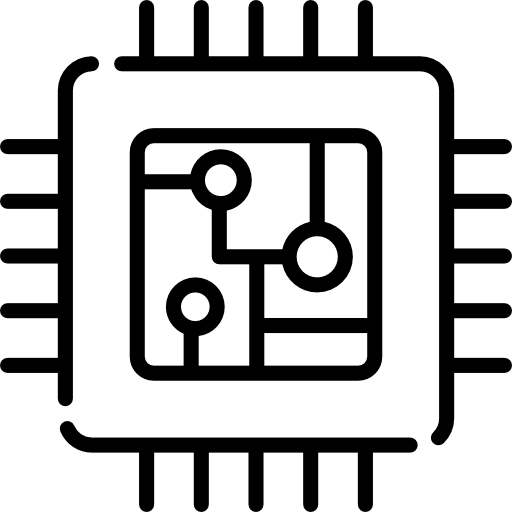Artificial Intelligence: What It Is and How It Is Used
It’s going to find patterns that are different, but not necessarily ones that are meaningful or important. If all the men are wearing one color of clothing, or all the photos of women were taken against the same color backdrop, the colors are going to be the characteristics that these systems pick up on. “Most retext ai machine learning algorithms are at some level just calculating a bunch of statistics,” says Rayid Ghani, professor in the machine learning department at Carnegie Mellon University. Before machine learning, if you wanted a computer to detect an object, you would have to describe it in tedious detail.
- The global market for AI in media and entertainment is estimated to reach $99.48 billion by 2030, growing from a value of $10.87 billion in 2021, according to Grand View Research.
- Access our full catalog of over 100 online courses by purchasing an individual or multi-user digital learning subscription today allowing you to expand your skills across a range of our products at one low price.
- The matter is further complicated by the fact that
the cognitive sciences still have not succeeded in determining
exactly what the human abilities are. - Launched in November 2022 by OpenAI, ChatGPT is powered by a large language model that allows it to closely emulate human writing.
These examples are programmatically compiled from various online sources to illustrate current usage of the word ‘artificial intelligence.’ Any opinions expressed in the examples do not represent those of Merriam-Webster or its editors. In DeepLearning.AI’s AI For Good Specialization, meanwhile, you’ll build skills combining human and machine intelligence for positive real-world impact using AI in a beginner-friendly, 3-course program. Machines with limited memory possess a limited understanding of past events. They can interact more with the world around them than reactive machines can. For example, self-driving cars use a form of limited memory to make turns, observe approaching vehicles, and adjust their speed.
What is Artificial
It also encompasses sub-fields of machine learning and deep learning, which are frequently mentioned in conjunction with artificial intelligence. These disciplines are comprised of AI algorithms which seek to create expert systems which make predictions or classifications based on input data. Artificial intelligence (AI) is a wide-ranging branch of computer science concerned with building smart machines capable of performing tasks that typically require human intelligence. While AI is an interdisciplinary science with multiple approaches, advancements in machine learning and deep learning, in particular, are creating a paradigm shift in virtually every sector of the tech industry.
This developed into research around ‘machine learning’, in which robots were taught to learn for themselves and remember their mistakes, instead of simply copying. Algorithms play a big part in machine learning as they help computers and robots to know what to do. Artificial Intelligence is a field that combines robust datasets and computer science. AI and Machine Learning (ML) is changing the way in which society addresses economic and national security challenges and opportunities. It is being used in genomics, image and video processing, materials, natural language processing, robotics, wireless spectrum monitoring and more.
Introducing McKinsey Explainers: Direct answers to complex questions
Generative models have been used for years in statistics to analyze numerical data. The rise of deep learning, however, made it possible to extend them to images, speech, and other complex data types. Among the first class of models to achieve this cross-over feat were variational autoencoders, or VAEs, introduced in 2013. VAEs were the first deep-learning models to be widely used for generating realistic images and speech.
Machines are improving their ability to ‘learn’ from mistakes and change how they approach a task the next time they try it. NIST leads and participates in the development of technical standards, including international standards, that promote innovation and public trust in systems that use AI. A broad spectrum of standards for AI data, performance and governance are — and increasingly will be — a priority for the use and creation of trustworthy and responsible AI. NIST’s AI portfolio includes fundamental research into and development of AI technologies — including software, hardware, architectures and human interaction and teaming — vital for AI computational trust. Remarkable surges in AI capabilities have led to a wide range of innovations including autonomous vehicles and connected Internet of Things devices in our homes. AI is even contributing to the development of a brain-controlled robotic arm that can help a paralyzed person feel again through complex direct human-brain interfaces.
AI is changing the game for cybersecurity, analyzing massive quantities of risk data to speed response times and augment under-resourced security operations. The applications for this technology are growing every day, and we’re just starting to
explore the possibilities. But as the hype around the use of AI in business takes off,
conversations around ethics become critically important. To read more on where IBM stands within the conversation around AI ethics, read more here. AI has the potential to transform how we work and live in the world today.
Athena is based on formal systems known as
denotational proof languages (Arkoudas 2000). A. Alexander Kronrod, a Russian AI researcher, said «Chess is the
Drosophila of AI.» He was making an analogy with geneticists’
use of that fruit fly to study inheritance. Playing chess requires
certain intellectual mechanisms and not others. Chess programs now
play at grandmaster level, but they do it with limited intellectual
mechanisms compared to those used by a human chess player,
substituting large amounts of computation for understanding. Once we
understand these mechanisms better, we can build human-level chess
programs that do far less computation than do present programs.
Self-driving cars are a recognizable example of deep learning, since they use deep neural networks to detect objects around them, determine their distance from other cars, identify traffic signals and much more. Personal AI assistants like Siri, Alexa and Cortana use natural language processing, or https://deveducation.com/ NLP, to receive instructions from users to set reminders, search for online information and control the lights in people’s homes. In many cases, these assistants are designed to learn a user’s preferences and improve their experience over time with better suggestions and more tailored responses.






